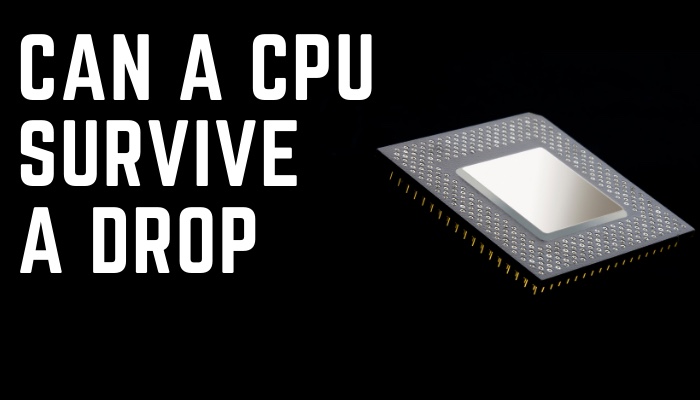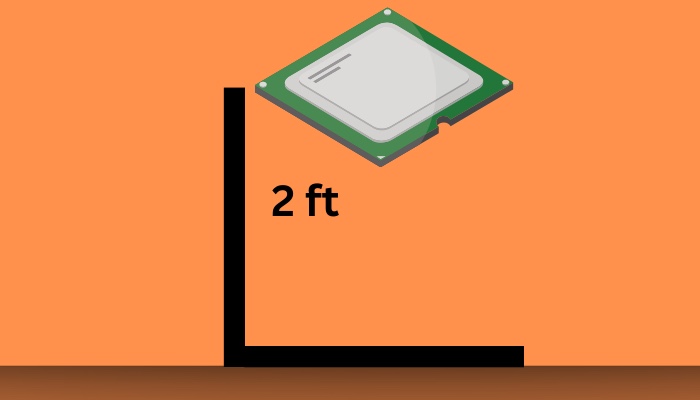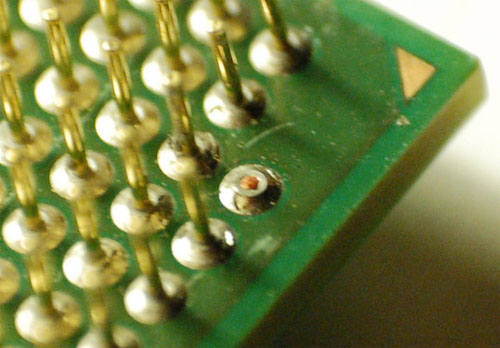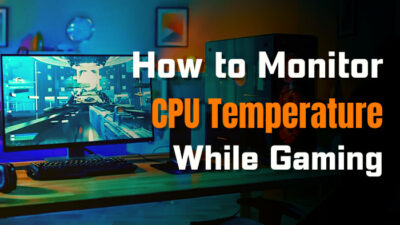It’s one of the most enjoyable moments when you get your hand on the much-awaited CPU. But the happiness can go away immediately if the CPU slips away from your hand and drops on the floor.
I am sure you missed your heartbeat for a second when you saw that happen.
Are you worrying whether the CPU will survive the drop? Don’t worry. Here, I will answer that elaborately. I will also discuss CPU durability and how to keep it well-protected.
So, tag along.
Can a CPU Survive a Drop?
The survival chance of a CPU from a sudden drop depends on several factors, such as the height, the type of floor, and the condition of the CPU. If the distance between the CPU and the floor is small, like 1 to 2 ft (0.61 m), the survival chance of the CPU is higher.
A question like whether it is possible for a CPU to be damaged from being dropped may appear in your mind when your CPU falls on the ground.
Minor damage may happen if the drop distance between a processor and the ground is over 2 ft (0.61 m). But that’s not for sure. The probability is fifty-fifty.
Besides, the consequences may be small if the CPU falls on a wooden floor. But the effect can be more if it drops on solid concrete ground.
The physical impact will be close to zero percent if the processor falls on soil or grass. Except, a bit of dust may stick to the body temporarily. You can wipe them off easily with a piece of cloth or tissue paper.
You may worry about the CPUs you buy from Amazon, Best Buy, or other websites.
Truth be told, it’s tough to trust delivery companies. Most of the time, they don’t care much about their delivery products.
If the seller sends your package and ships it with a well-protective measure, it may survive any accidental drop. You may or may not return the damaged processor.
Moreover, the damage will be more if the processor is already broken beforehand. But the damaging impact will be lesser on the new ones.
Once, I unintentionally dropped my Intel Core i5-12400 processor. Luckily, it was dropped on my feet first and then on the floor. There was no physical damage.
I got lucky more because my processor was Intel. Thanks to them, they removed the CPU’s pins and placed them on the motherboard socket.
If I had an AMD processor, some pins would surely be bent from the drop. Don’t worry. You can fix the bent pins on a CPU.
When the CPU drops from a certain distance, physical damage may occur. Sometimes the damage may not be visible with open eyes if the damage is internal.
You may experience the aftereffect of the drop later, such as more overheating, performance degradation, etc.
How Durable are CPUs?
A CPU can last up to many years (10 to 15 years). But of course, the durability depends on some factors, such as the quality of the CPU, how often you use it, and under which conditions you keep the processor. The lifespan will be longer if you take good care of your CPU.
The CPU is one of the delicate components of the PC. And, CPUs indeed start to degrade over time. How long it will take to degrade depends on the quality of the processor.
The manufacturers handle the quality area. They ensure that every CPU’s product quality is good.
The manufacturer uses high-trait products and advanced processes to make the CPU more durable and compatible than the old model CPUs.
Your usage patterns also count on the durability of your processor. If you always use high CPU-demanding games & software programs and overclock your processor, obviously, the longevity of the CPU will reduce.
Moreover, the surrounding condition also impacts the CPU’s durability. As you know, heat is the main enemy of the processor. If you live in a state like Texas or Florida, the possibility of overheating is higher than in New York or other lesser hot states.
What Happens If the CPU is Broken?
 When a CPU gets broken due to a sudden fall-off or other reasons, you may experience issues such as system instability, freezing, blue screen of death, slow performance, unusual noise or smell, errors in OS, high CPU usage, etc. If the damage is critical, the PC won’t start.
When a CPU gets broken due to a sudden fall-off or other reasons, you may experience issues such as system instability, freezing, blue screen of death, slow performance, unusual noise or smell, errors in OS, high CPU usage, etc. If the damage is critical, the PC won’t start.
If you see any signs mentioned here that often occur while you use your computer, you can assure that the problem is on the CPU. It’s probably on the verge of dying.
The broken CPU won’t let you use the computer properly. When you try using the PC, it will freeze or show BSOD (Blue Screen of Death).
If the computer still functions with the broken CPU, the operating system and other applications won’t be able to perform as they should. Most of the time, it will crash.
The processor will struggle to keep up with the applications and workload, which will cause the computer to become slow and unresponsive.
Moreover, the processor will excessively overheat, and the processor may get fried from this overheating. If it burns, you can get some weird smell from the PC tower.
In the end, the PC will shut off and won’t open until you replace the broken CPU. Also, go through our separate guide on whether a damaged CPU still works to learn more.
FAQs
How fragile is a CPU?
A CPU is a bit fragile since it is one of the most essential and smallest components of the PC. AMD CPUs still have pins on them, while the Intel ones don’t have any. That’s why AMD processors are more fragile than Intel processors.
Can you touch a CPU with your hands?
Yes, you can touch a CPU with your hands, but you should not touch the pins or contacts of the CPU.
How often do CPUs fail?
The possibility of the CPU failing is 1% since it is designed to withstand high tolerances.
Final Thought
Taking proper precautions to protect CPUs and other delicate electronic components is essential. If you want to avoid the dropping situation, keep the processor away from the edge of the table. Or, you can keep it on the mattress while you unwrap the CPU from the package.
I hope all your doubts are clear now. Comment below if you have any queries.
Peace!




